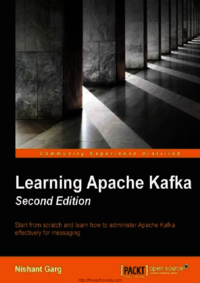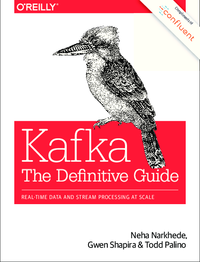Categoría "Big Data"
Se han encontrado 2 Coincidencias
Learning Apache Kafka 2dn Ed
This book is for those who want to know about Apache Kafka at a hands-on level; the key audience is those with software development experience but no prior exposure to Apache Kafka or similar technologies. This book is also for enterprise application developers and big data enthusiasts who have worked with other publisher-subscriber-based systems and now want to explore Apache Kafka as a futuristic scalable solution.
61 Visitas | 48 Descargas | 2019-05-07 11:37:55 | moliver
In today’s world, real-time information is continuously being generated by applications (business, social, or any other type), and this information needs easy ways to be reliably and quickly routed to multiple types of receivers. Most of the time, applications that produce information and applications that are consuming this information are well apart and inaccessible to each other. These heterogeneous application leads to redevelopment for providing an integration point between them. Therefore, a mechanism is required for the seamless integration of information from producers and consumers to avoid any kind of application rewriting at either end. Apache Kafka is an open-source stream-processing software platform developed by LinkedIn and donated to the Apache Software Foundation, written in Scala and Java. The project aims to provide a unified, high-throughput, low-latency platform for handling real-time data feeds.

Kafka: The Definitive Guide
It’s an exciting time for Apache Kafka. Kafka is being used by tens of thousands of organizations, including over a third of the Fortune 500 companies. It’s among the fastest growing open source projects and has spawned an immense ecosystem around it. It’s at the heart of a movement towards managing and processing streams of data.
48 Visitas | 42 Descargas | 2019-05-07 11:43:58 | moliver
Kafka got its start as an internal infrastructure system we built at LinkedIn. Our observation was really simple: there were lots of databases and other systems built to store data, but what was missing in our architecture was something that would help us to handle the continuous flow of data. Prior to building Kafka, we experimented with all kinds of off the shelf options; from messaging systems to log aggregation and ETL tools, but none of them gave us what we wanted. We eventually decided to build something from scratch. Our idea was that instead of focusing on holding piles of data like our relational databases, key-value stores, search indexes, or caches, we would focus on treating data as a continually evolving and ever growing stream, and build a data system—and indeed a data architecture—oriented around that idea.
Contribuir
Usted puede contribuir con Libros UCLV, es importante para nosotros su aporte..
Contribuir